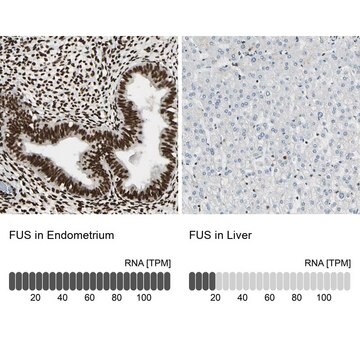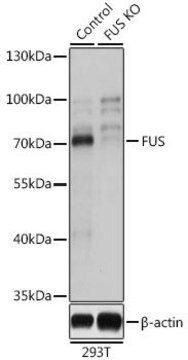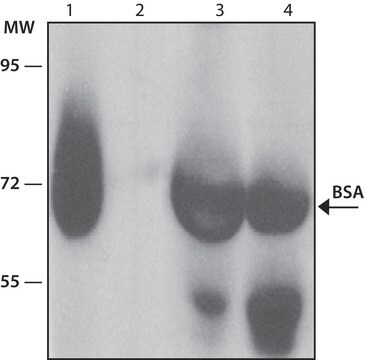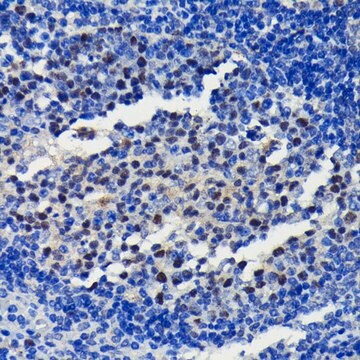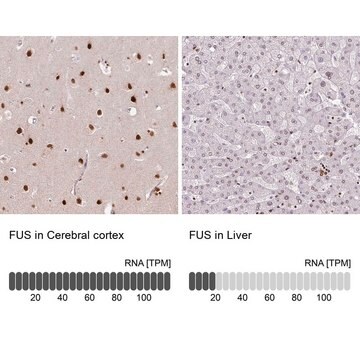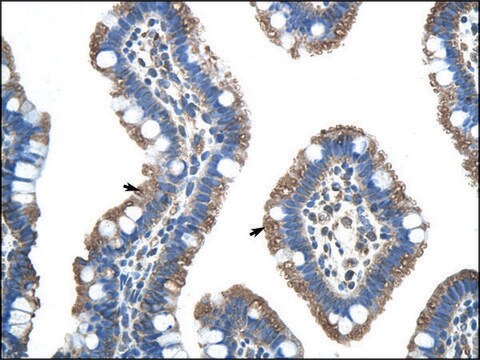SAB4200454
Anti-FUS antibody produced in rabbit

~1.0 mg/mL, affinity isolated antibody
동의어(들):
Anti-ALS6, Anti-CHOP, Anti-FUS-CHOP, Anti-FUS1, Anti-TLS, Anti-TLS/CHOP, Anti-hnRNP-P2
About This Item
IHC
WB
indirect immunofluorescence: 2.5-5 μg/mL using HeLa cells.
western blot: 1.5-3.0 μg/mL using using lysates of Jurkat cells.
추천 제품
생물학적 소스
rabbit
Quality Level
결합
unconjugated
항체 형태
affinity isolated antibody
항체 생산 유형
primary antibodies
클론
polyclonal
양식
buffered aqueous solution
분자량
antigen ~68 kDa
종 반응성
rat, human
향상된 검증
independent
Learn more about Antibody Enhanced Validation
농도
~1.0 mg/mL
기술
immunohistochemistry: 5-10 μg/mL using formalin-fixed paraffin embedded rat colon.
indirect immunofluorescence: 2.5-5 μg/mL using HeLa cells.
western blot: 1.5-3.0 μg/mL using using lysates of Jurkat cells.
UniProt 수납 번호
배송 상태
dry ice
저장 온도
−20°C
타겟 번역 후 변형
unmodified
유전자 정보
human ... FUS(2521)
rat ... Fus(317385)
일반 설명
특이성
면역원
애플리케이션
- immunohistochemistry
- immunoblotting
- immunofluorescence
생화학적/생리학적 작용
물리적 형태
저장 및 안정성
면책조항
적합한 제품을 찾을 수 없으신가요?
당사의 제품 선택기 도구.을(를) 시도해 보세요.
Storage Class Code
10 - Combustible liquids
Flash Point (°F)
Not applicable
Flash Point (°C)
Not applicable
가장 최신 버전 중 하나를 선택하세요:
자사의 과학자팀은 생명 과학, 재료 과학, 화학 합성, 크로마토그래피, 분석 및 기타 많은 영역을 포함한 모든 과학 분야에 경험이 있습니다..
고객지원팀으로 연락바랍니다.